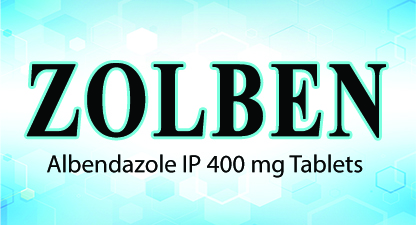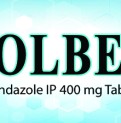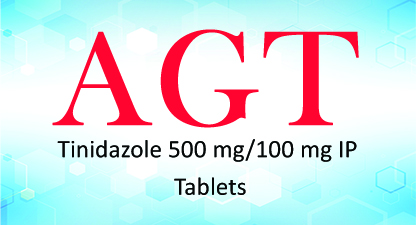ZOLBEN
Albendazole, also known as albendazolum, is a medication used for the treatment of a variety of parasitic worm infestations. It is useful for giardiasis*, trichuriasis*, filariasis*, neurocysticercosis*, hydatid disease*, pinworm disease, and ascariasis*, among others.
- Categories : Anti-Helmintic
- Share Now :
ZOLBEN 400 CT
Generic Name: Albendazole
Therapeutic Category: Anti-helminthic
Composition: Each chewable tablet contains Albendazole IP 400 mg
Pregnancy Category: C
Presentation: Available in the pack size as 1 tablet X 40 strips
Mechanism of Action
As a vermicidal, albendazole causes degenerative alterations in the tegument and intestinal cells of the worm, by binding to the colchicine-sensitive site of tubulin, thus inhibiting its polymerization or assembly into microtubules. The loss of the cytoplasmic microtubules leads to impaired uptake of glucose by the larval and adult stages of the susceptible parasites, and depletes their glycogen stores. Degenerative changes in the endoplasmic reticulum, the mitochondria of the germinal layer, and the subsequent release of lysosomes result in decreased production of adenosine triphosphate (ATP), which is the energy required for the survival of the helminth. Due to diminished energy production, the parasite is immobilized and eventually dies.
Albendazole also has been shown to inhibit the enzyme fumarate reductase, which is helminth-specific. This action may be considered secondary to the effect on the microtubules due to the decreased absorption of glucose. This action occurs in the presence of reduced amounts of nicotinamide-adenine dinucleotide in reduced form (NADH), which is a coenzyme involved in many cellular oxidation-reduction reactions.
Indications
It is effective first line of treatment against:
- Flatworms
- Flukes/trematodes: Fasciolosis
- Tapeworm/cestodes: Neurocysticercosis, Echinococcosis (Hydatid Disease)
- Nematodes
- Enterobiasis (pinworm infection)
- Trichuriasis (whipworm infection)
- Ascariasis
- Hookworm
- Cutaneous larva migrans (caused by Ancylostoma)
- Filariasis
Dosage
Route of administration: Oral
Neurocysticercosis
More than 60 kg: 400 mg two times day for 8-30 days
Less than 60 kg: 15 mg/kg/day in divided doses for 8-30 days; not to exceed 800 mg/day
Hydatid Disease
More than 60 kg: 400 mg two times a day for 28 days; then, 14 drug-free days for 3 cycles
Less than 60 kg: 15 mg/kg/day divided doses, no more than 800 mg/day for 28 days; then, 14 drug-free days for 3 cycles
Ascariasis, Hookworm: 400 mg once
Pinworm: 400 mg once, repeat in 2 weeks
Fluke: 10 mg/kg once a day for 7 days
Larva Migrans, Cutaneous: 400 mg once a day for 3 days
Taken with meal.
Pharmacokinetics
Absorption: Poorly absorbed in gastrointestinal tract due to its low aqueous solubility, bioavailability <5%
Protein Binding: Approximately 70%
Metabolism: Hepatic
Excretion: Bile (humans); Urine (ruminants*)
Half-life: 8-12 hours
Adverse Effects
The most common side effects by albendazole are headache and abnormal liver function.
- People also experience abdominal pain, nausea or vomiting, dizziness or vertigo, increased intracranial pressure, meningeal signs, temporary hair loss, and fever.
Side effects can be different when treating for hydatid disease versus neurocysticercosis
Contraindications
ZOLBEN is contraindicated in the following populations and situations:
- Hypersensitivity to albendazole or any other component of the formulation.
Precautions
- In liver disease, biliary tract problems (such as blockage), blood/bone marrow disorders
- This medication may cause liver problems. Because drinking alcohol increases the risk of liver problems, limit alcoholic beverages while using this medication.
Drug Interactions
- The anti-epileptics carbamazepine, phenytoin, and phenobarbital lower the plasma concentration and the half-life of albendazole.
- The antacid cimetidine heightens serum albendazole concentrations, increases the half-life of albendazole.
*Terminologies:
Giardiasis: Infection in your small intestine caused by a microscopic parasite called Giardia lamblia.
Trichuriasis: Also known as whipworm infection, is an infection by the parasitic worm Trichuris trichiura (whipworm).
Filariasis: Filariasis is a parasitic disease caused by an infection with roundworms of the Filarioidea type.
Neurocysticercosis: . Neurocysticercosis occurs when cysts formed by the infection caused by Taenia solium, grow within the brain causing neurologic syndromes such as epileptic seizures.
Hydatid disease: A person who comes in contact with the faeces of an infected dog (that is, when eggs from the tapeworm are passed in the faeces) may develop hydatid disease. May cause cyst formation in major organs such as liver and lungs.
Ascariasis: Is an infection of the small intestine caused by Ascaris lumbricoides.
Ruminants: The ruminants comprise the cattle, sheep, antelopes, deer, giraffes, and their relatives who chew the cud regurgitated from its rumen.



